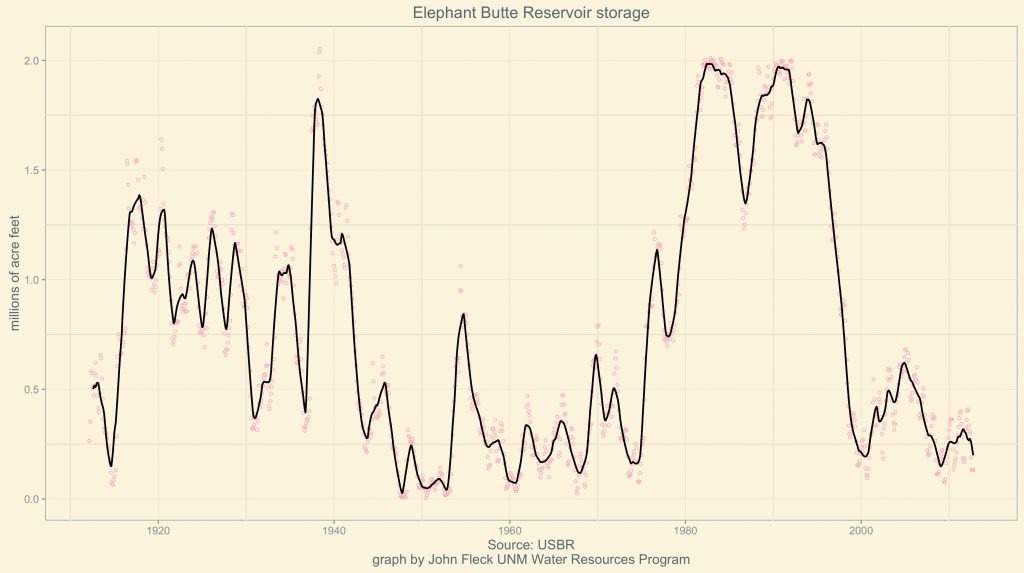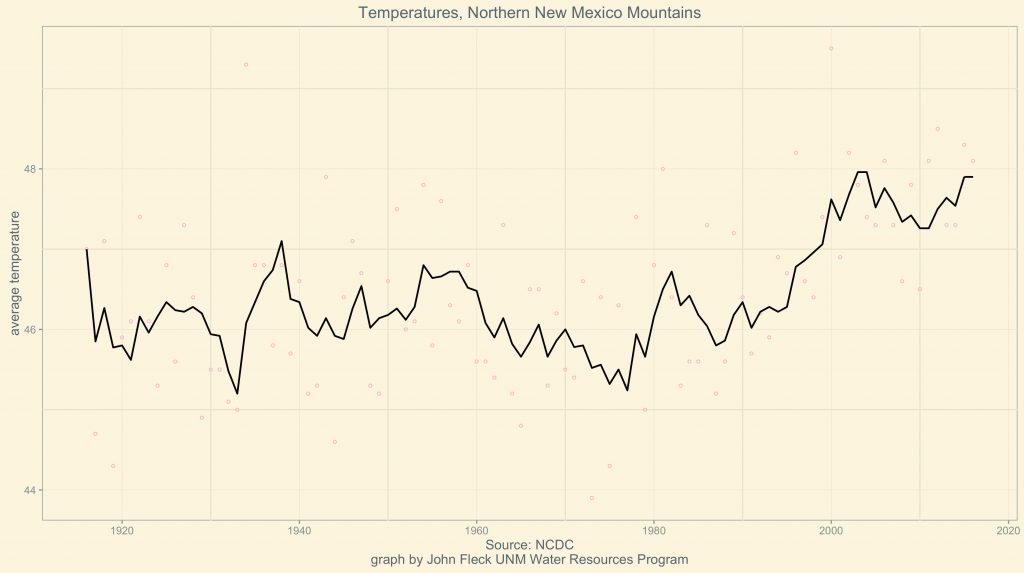
Elephant Butte Reservoir

temperatures, Northern New Mexico mountains
Elephant Butte, one of the first big dams built by the then-Reclamation Service (now Bureau of Reclamation), is celebrating its 100th anniversary this year.
As the graph above shows, its reservoir ended the 2016 water year Sept. 30 at less than 7 percent full. The reservoir’s ups and downs through history show the great variability in New Mexico’s climate. But in recent years, New Mexico State University’s Phil King told Mónica Ortiz Uribe of public radio’s Fronteras Desk, something more seems to be going on as climate changes pushes up temperatures in the northern mountains that feed snowpack to the Rio Grande:
What’s become less reliable though, is the water supply behind the dam. Currently Elephant Butte Reservoir is less than 7 percent full.
“Obviously it would be nicer to celebrate the 100th anniversary with the water spilling over the spillway,” said Robert Fabian, a fourth generation farmer in the Mesilla Valley of southern New Mexico.
Fabian rotates his crops year to year growing onions, cotton, chile and alfalfa.
“Most of my family came from Texas to partake in that Garden of Eden that was being created out here in the desert,” he said.
In the last century, that Garden of Eden has gone through both wet and dry cycles. The latest dry spell has hung on for 14 years, only now climate change is amplifying the effects of drought.
“I am quite concerned that this is not just one of the same old mood swings but a permanent shift toward a more arid climate,” said Phil King, a civil engineer and consultant for Elephant Butte Irrigation District.
Sources:

Can’t we just blame Texas? Oh that’s right … there are those pecans also … but surely NOT a rapidly warming climate!